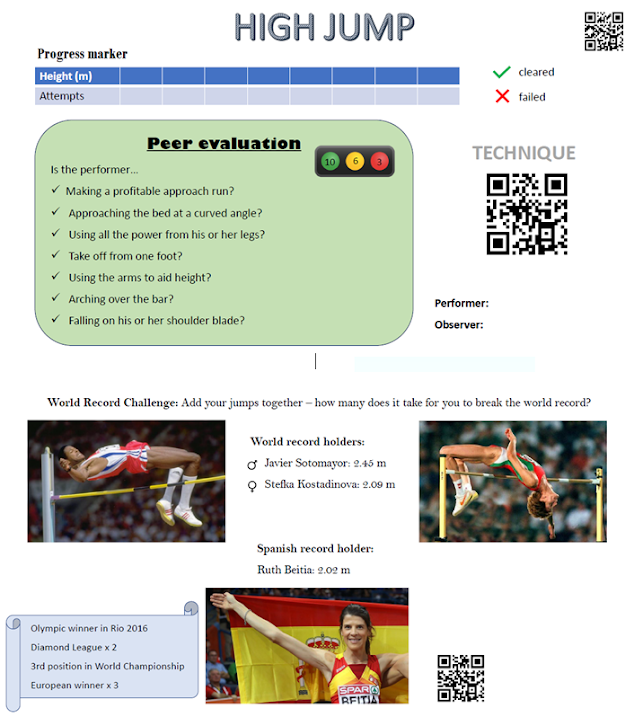Shared by César García:
Think of and explain a cross curricular project or
activity that involves Physical Education and other subject(s).
Now go the
Forum of this module and briefly explain your task to your course partners.
This is not
easy, but it’s one of the CLIL keys. You work with other teacher like a team,
and your experiences cross the boundaries of your subject and create new knowledge
with much more meaning.
CROSS CURRICULAR PROYECT: “Not only the Pisuerga river
runs through Valladolid”
This project will be carried out from English, Music, Religion and Physical
Education subjects.
The development of the activities is the following:
• From the Music subject will work….
Musical language will be used as a
channel for the discovery and resolution of some clues. The students visit and
observe the work of a tourist guide who works in the center of the city of
Valladolid to create in them a motivation and a reflection about which route
they can create.
Lates, in cooperative
groups, they will think about which tourist points they would like to include
in the route and once everything has been put together, each group will
specialize in the search for information on the specific point of the route
that they have decided on.
Finally, once the
information to be presented about the specific point of interest has been
selected, the students will create a QR code, where all the information created
can be deciphered through a mobile.
• From the Religion
subject will work…
Discover the
signs of religious culture that have forged the history and identity of this
city.
Different places
of religious interest will be motivated for their inclusion in the route that
they are designing.
• From the Physical Education subject will work…
Map orientation will be worked on to find QR codes.
Once the QR codes of the places to be visited are generated, an orientation
activity will be carried out working on the tracking signals, as well as map
orientation. For this, each class will place the QR codes in the corresponding
places.
After that, each class must follow the route that the other classes have
prepared for them. They will carry it out through the reading of a map, where
they must work cooperatively reading the map and thus make the decision of the
path to follow.
Students must adapt the intensity/speed of the route by controlling their
heart rate and must adapt to the previously indicated. They must calculate the
distance between the points of the route. Subsequently, they will calculate how
many kcal a person spends when carrying out the chosen route based on the
average HR.
During the route, students must take photos with the mobile of each
emblematic point of the route to make the video. Once the route has been
completed, and having worked from the English subject, the students will use TICs
to edit the final video.
• From the English subject will work…
The English language will be used as
a means to transmit the final product with greater social projection.
The students will work “WRITING A DESCRIPTION OF MY CITY: PLACES TO VISIT
AND LANDMARKS”
Students will present a draft with a script and the expressions used in
English to describe a city and its points of interest. A vocabulary list is
provided with the names of places of tourist interest and the most common
adjectives that describe them. Individually, students write sentences about
their city using these expressions and the vocabulary provided. In cooperative
teams write the best possible script for the team presentation.
In this work I attach a photo of the product of the project, the brochure
that the students made to later do the orientation in Physical Education class














